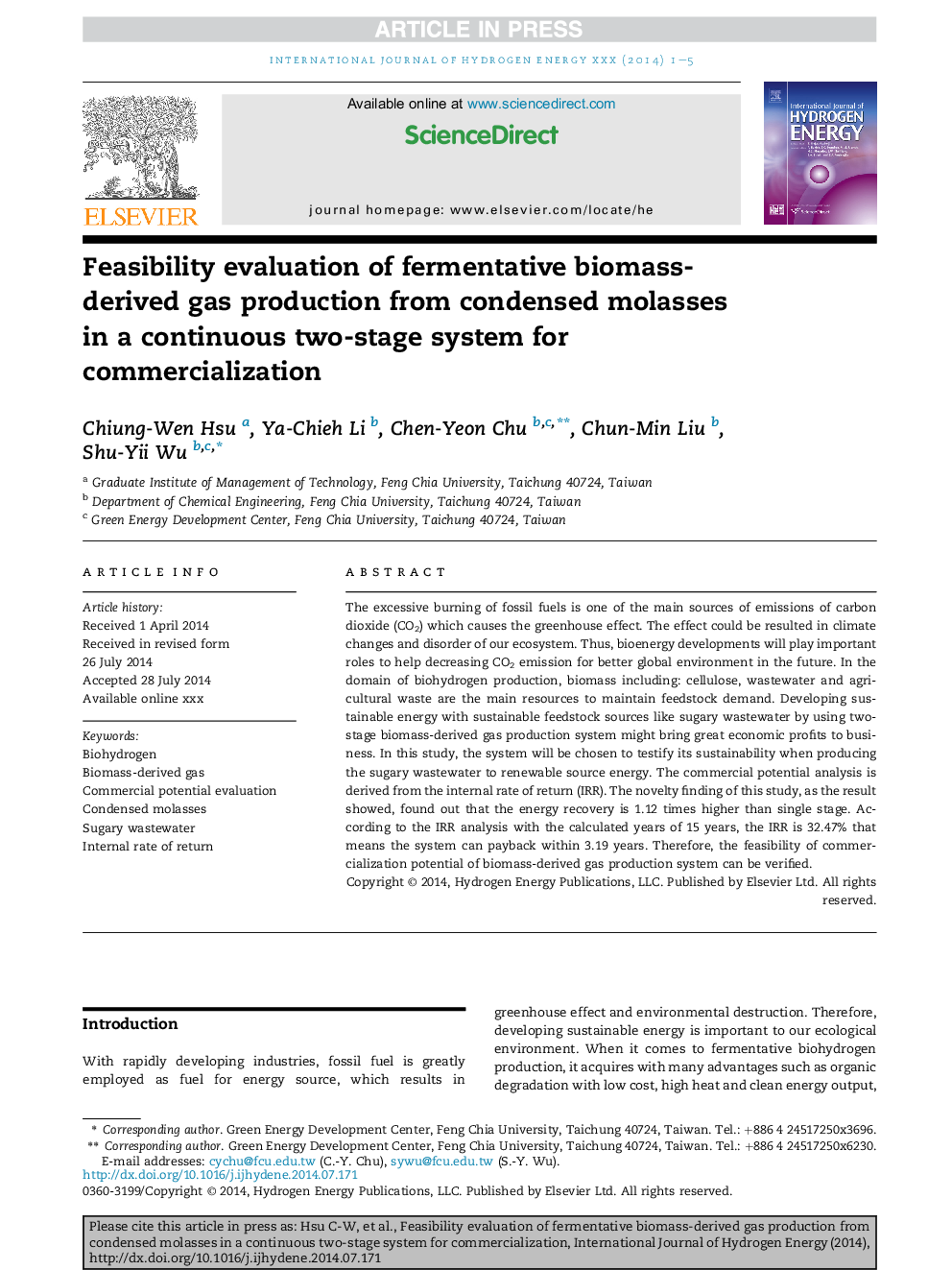| Article ID | Journal | Published Year | Pages | File Type |
|---|---|---|---|---|
| 7717938 | International Journal of Hydrogen Energy | 2014 | 5 Pages |
Abstract
The excessive burning of fossil fuels is one of the main sources of emissions of carbon dioxide (CO2) which causes the greenhouse effect. The effect could be resulted in climate changes and disorder of our ecosystem. Thus, bioenergy developments will play important roles to help decreasing CO2 emission for better global environment in the future. In the domain of biohydrogen production, biomass including: cellulose, wastewater and agricultural waste are the main resources to maintain feedstock demand. Developing sustainable energy with sustainable feedstock sources like sugary wastewater by using two-stage biomass-derived gas production system might bring great economic profits to business. In this study, the system will be chosen to testify its sustainability when producing the sugary wastewater to renewable source energy. The commercial potential analysis is derived from the internal rate of return (IRR). The novelty finding of this study, as the result showed, found out that the energy recovery is 1.12 times higher than single stage. According to the IRR analysis with the calculated years of 15 years, the IRR is 32.47% that means the system can payback within 3.19 years. Therefore, the feasibility of commercialization potential of biomass-derived gas production system can be verified.
Related Topics
Physical Sciences and Engineering
Chemistry
Electrochemistry
Authors
Chiung-Wen Hsu, Ya-Chieh Li, Chen-Yeon Chu, Chun-Min Liu, Shu-Yii Wu,
